|
How long have you lived in Hyde Park? In what ways are you involved in the community? I came here in 1998, so I’ve lived here for 24 years. I love to walk in the Stony Brook Reservation and enjoy the wildflowers and birds I find there. I support the library and I tutor a person in English at the library through Jewish Vocational Services, an organization that helps people with education and jobs. They are based in Boston and have a satellite location at the Hyde Park library. When did you become interested in butterflies and how did you learn how to raise them? I’ve been interested in butterflies for about 15 or 20 years. My interest started with a course I took at the Massachusetts Audubon Society. I learned a lot about butterflies there, especially because we took many field trips to see butterflies in their native habitats. I’ve been lucky to meet a woman named Madeline Champagne who loves to help people raise these butterflies. She also educates kids in schools about the life cycle of the Monarch butterfly. Teachers sometimes order butterfly caterpillars from for-profit places, but they're not healthy when they’re raised that way. They can be studied in the wild, or raised from a wild egg, to become a caterpillar and then a chrysalis in the classroom and then released to the outdoors. You can raise Monarchs at your home, and can do this also with Black Swallowtail butterflies. The food plant for the caterpillar is what’s necessary. They can’t eat just any leaves, they have to eat just certain leaves. The Black Swallowtail caterpillar eats leaves of the carrot family which includes parsley, dill, and Queen Anne’s Lace, among others. I had some dill growing once and I found a caterpillar on it, which was really exciting. The Black Swallowtail caterpillar is so beautiful. What are the stages and steps involved with raising a butterfly? There are 4 stages: egg, caterpillar, chrysalis and butterfly. When Monarch butterflies fly through your garden, the female wants to deposit its egg and it needs to find a Milkweed plant. This plant is called Milkweed because if you break it off anywhere, the sap looks like milk. The Milkweed flower is attractive to all insects and it blooms in the spring. Milkweed leaves are the important part of the plant that Monarch caterpillars need to eat and grow. The female butterfly will look for places to lay its egg - usually on the younger leaves of the Milkweed plant. It will curl its abdomen onto the underside of a leaf and deposit an egg that looks like a tiny little, creamy white dot. I watch the female as she flies around the milkweed plants to see where she deposits her egg. Then I cut off the part of the plant that has the leaf with the egg on it and bring it inside and put it in a small container with water. I use a prescription pill bottle; I’ve punched a hole in the cover just big enough for the stalk that has the leaf with the egg on it. I place that in a cage that I made out of a plastic bin and a screen (see photo). After about 5 days, the egg will hatch into a tiny little caterpillar. For the next two weeks it will eat many leaves from the Milkweed plant, starting with the leaf it was brought in on. As it eats and grows, I’ll have to bring in more leaves. There will be lots of leaves in the cage. The caterpillars are eating and pooping machines during those two weeks. They grow to the size of your pinky after about two weeks. They are very beautiful, with yellow and black markings. After about two weeks their behavior changes; often they will get active and race around the cage and then they get very quiet and still. Soon they secrete a substance that helps them hang from the top of the cage or from a leaf. Next, you’ll see the caterpillar has formed into the shape of a J, hanging from the roof of the cage or from the sturdy rib of a leaf. After about a day the J starts to shake and move and all of a sudden it sheds its skin and a chrysalis emerges. It takes a couple hours for the completed chrysalis to be formed. It’s an apple green color with glittering gold dots - it is so beautiful, like a jewel. The chrysalis will hang from its place in the cage and after about two weeks you’ll notice that the chrysalis will change from its beautiful apple green color and will start to get dark. At the point where the butterfly is about to emerge from the chrysalis you’ll start to see the butterfly’s black and orange colors in the chrysalis. That’s when I take the cage outside so the butterfly doesn’t get out in the house, which happened to me once. Outside, I set it in the shade because it is usually a hot day and I leave the screened cover open. When it is ready, the butterfly will emerge from the chrysalis (which is now transparent and looks like plastic); it will hang on to the now empty chrysalis by its feet for a couple hours to dry its wings before flight. It dangles and dries its wings for 3-5 hours, then it will start to open and flap its wings indicating it is getting ready to go. At this point, the butterfly is ready to leave the cage. If you are lucky, it will walk onto your finger and you can take it out of the cage on your hand. Many times the newly emerged butterfly will stay in nearby bushes for a short while when it takes its first flight but when it is ready to take off, you’ll see it fly off into the wide blue sky to begin its journey. It is beginning a flight toward the Oyamel Mountains in Mexico where Monarchs go to roost with thousands of other Monarchs who also have migrated to spend the winter in this unique fir forest. Are there any predators when you take the cage outside and open it? I wondered about that at first. But the adult Monarch’s bright orange color is a warning color to other animals. Predators know to stay away from creatures that are orange because they are poisonous. So now I don’t worry about them. When does the butterfly season begin and end? Monarchs first get here in late June or July. When they come to my garden, I go out to see if one is depositing eggs. Usually Monarchs stop depositing eggs around late September and October because they need to start their migration and make their way down to Mexico and the forest where they will be in the winter. In the Oyamel forest there are trees filled with thousands of roosting Monarchs. In the spring these Monarchs will begin their migration to the north and by July we will see them again. Aside from Milkweed and Butterfly Bushes, are there other plants that are important to have for the butterflies? The only essential plant for the Monarch is Milkweed, its caterpillar food plant. But butterflies will sip nectar from just about any flower. As with most butterflies, they seem to especially love the flowers of butterfly bushes (Buddleia davidii.) Why not just let this process happen outside in nature? Monarch eggs are subject to predators which include other insects. Caterpillars may also be endangered by predators in the wild. You can help Monarchs survive if you take them in the house to raise them, and then release the butterflies to the wild. How many butterflies do you raise each season? Well, this season I think there were between seven and nine. I have raised more Monarchs in other years. Often I’ll have multiple Monarch caterpillars at different stages of growth at one time. If I take a vacation away from my home, I give the cage to a friend to keep an eye on things, to put in more leaves or to release the butterfly if it is out of the chrysalis and ready to fly. If someone wanted to start doing this, what would you suggest? I’d say find Milkweed seeds. Look for pods on existing plants and distribute the seeds around an empty place in your garden. Milkweeds have beautiful little brown seeds with fluffy hairs attached that carry them in the wind. There are different kinds of Milkweed plants and butterflies like some more than others. Common Milkweed (Asclepias syriaca) is the one you will most often find in open meadows. In the fall you can collect the mature pods on these plants and when the seeds are bursting out of the pod, you can scatter them in your garden. When the seeds sprout and grow, and you have Milkweed plants in your garden, the Monarchs will come. Another variety in my garden is called Butterfly Weed, (Asclepias tuberosa). It has a spectacular orange flower and grows very well. But most of the Monarchs I see place their eggs on Common Milkweed.
I’d be glad to answer questions, so feel free to email me any questions you may have. [email protected]. _________________________________________________________ Nominate yourself or someone in the community for a Humans of Hyde Park story; nominees can remain anonymous in the story or use their first name only if they prefer: https://goo.gl/forms/qgTj1Rh8t2bSbh973
4 Comments
Here is a special Father's Day edition of Humans of Hyde Park!
Tell me how you came to Hyde Park and what you do in Hyde Park? My wife and I were looking to settle down and she was adamant about what she wanted in a house, and I was adamant about it being in Boston since I’m a 5th generation Bostonian and Hyde Park was the perfect place where we felt like we would get what we wanted out of a home as well as a community environment to raise our kids in. We came here 6 years ago and we love it! It reflects the reasons why we chose the neighborhood and because of that it’s just more compelling to want to give back to the community. What are the reasons that made you come here and the reasons that keep you here in Hyde Park? We have 2 children and what I remember from growing up in Boston that I loved most is that I grew up with kids from everywhere and I grew up seeing those kids in the neighborhood, seeing those kids around, and I see there’s parts of the city where that’s not as prevalent as I remember which correlates to the recent Boston Foundation Study that showed the shrinking child population. So when we came here and I saw that there was diversity, kids playing together, families, access to green space where the kids can congregate, it reminded me of the best of Boston that I had and I want that for my kids too. That’s what it is here! And the data speaks for itself: the prevalence of green space, family households - that’s what attracted us. Since then we’ve met other families who are active and engaged and that’s inspiring to me because at the last Reimagining Engagement session we heard Rep. Consalvo speak about how it’s not a surprise that Hyde Park is rising to the top as a place to live because it’s a reflection of it being a collaborative community. All the assets that our community has is driven by community efforts and collaboration with the reps and officials to funnel those resources here. I’ve seen that happen and I feel like there’s a sense of community. That’s what drove us here, but when you’re actually living it and experiencing it, it makes you want to stay. What do you do professionally and what community projects have you been involved in? I’m a public land use planner; I’ve done land use planning for a number of things from schools, housing, infrastructure, open space conservation, and land protection. The Moynihan Playground (at 920 Truman Parkway) has been one of the larger projects I’ve been involved in. There’s also an outstanding request for getting municipal signage. It’s still in the works since 2018. You go around the city and see them - Readville has them - there’s two in Hyde Park. You see there’s no real placemaking so people can have a shared community identity and shared history. There’s a perfect place for it at the base of Wakefield Avenue and Truman Parkway - it’s part of a city streetscape. How are you building a coalition in the community? If you bring up an idea and people are responsive to it, it’s the responsiveness that validates whether it’s worth pursuing. Because I’m aware of how certain processes work, I feel that it’d be irresponsible of me not to take it to the next step once there’s consensus around it. If it’s a good idea and people are going to benefit from it, then why not? That’s literally how it started, “Why don’t you write a letter?” How did the Moynihan Playground project get started? The playground started with my son. Children tend to like to play and they tend to know what they like to play and where they like to play it. We used to go around different playgrounds and he asked me, “How come we don’t have a playground like the other ones?” He was basically asking me why don’t we have modern equipment, and I didn’t have an answer. It was at a playground in Readville and a playground in Milton that I actually met neighbors who live in Fairmount Hill and they were there because their kids also liked those playgrounds so then I’m like, “OK. I’m not tripping!” Once I started to realize it’s a shared issue, it led me to believe there’s a trend of other families going to playgrounds in other neighborhoods instead of ones closer to them. I applied for CPA (Community Preservation Act) funds - this is where the theme of jurisdictional impasse comes into play. I applied for the first time in 2018. They have an eligibility form and the city’s initial response was, “This is DCR (Department of Conservation & Recreation) property. Have you talked to them?” Regardless of who owns the park, it’s in the city of Boston which means the primary beneficiaries are the Boston residents and although the city distributes CPA funds the mechanism to enact the funds is established at the state level. I reached out to DCR as the city suggested and requested a site visit. The city of Boston came out in October of 2018 and the staff of Councilor McCarthy’s office and a few other members of DCR staff - now that we were in person we could ask those questions: “Can you see this park? Do you see clearly it’s being used?” It’s hard to avoid the potential when it’s in your face. From there we were able to get a potential scope in the eyes of the state identified. We re-applied in 2019 after taking up the city’s encouragement in 2018 to connect with DCR. DCR has its own partnership matching fund so I decided to create a Go Fund Me page so we could apply to DCR for the matching funds, then go to the city to show them matching us and ask for money. We didn’t raise enough money but DCR awarded us, but wouldn’t give it until we had a match. The city let us know we didn’t get the money because there was a higher priority for housing. 2020 came around and I remember being up late and my wife walking in the living room and asking, “Are you still working on that playground thing again?” For me, I gotta see it through - I can’t see it unfinished! For the 3rd application I went deeper into the data - I’m gonna go full on planner on them. It was like, “Families are leaving Boston, but they’re coming to Hyde Park. Why wouldn’t you want to invest in things that are conducive to families?” When I first wrote the application, I had one kid and now if it were to start this year I’d have two. Our application was for $450K and it was based on DCR’s estimates and it was a matter of going to the committee hearings and listening to their priorities and it was about doing something for families. I spoke at the hearings and pointed out here’s a playground that checks the boxes of all of the priorities. I wrote to the committee members to follow-up on the comments to reiterate why the project aligns with the priorities let alone that it’s been years. The project went from not fully considered to being partially funded for $200K. I was so excited because I was able to tell my wife, “This year I stayed up and it worked!” This project shows how when there’s a multi-jurisdictional effort to collaborate for constituents that benefit from the resources they pay taxes to, things can happen. The city gave us partial funding and I applied to the state for a match where the one-to-one match happens and they gave us $140K. Now there’s $340K going to Moynihan Playground. Last I was told the design will be complete in summer/fall and construction will start in spring. What’s next? Do we still need to raise funds? With costs going up around the country in general, $340K from 2018 might not be the same today. Maybe members of the community can reach out to local councilors to see if there’s funding in the parks budget. It could be a matter of asking a state rep or senator to have money funneled to DCR to offset increased costs. Once they go out to bid we’ll have a sense of the costs - DCR will be the first ones to know what the costs are. At the end of the day, even though I wrote and called, it showed we need the city and state to work together to benefit the community of Hyde Park. If you're interested in supporting future efforts of the Moynihan Playground project please email [email protected] _________________________________________________________ Nominate yourself or someone in the community for a Humans of Hyde Park story; nominees can remain anonymous in the story or use their first name only if they prefer: https://goo.gl/forms/qgTj1Rh8t2bSbh973 Interviewed by Lara Saavedra.
How long have you lived in Hyde Park? My husband Anthony grew up in Hyde Park. After we got married, we bought a small house here together in 2005 that’s close to the Neponset River. What efforts do you make to keep Hyde Park clean, green and beautiful? Since I started a small business of pet care (walking, visiting, and housesitting for cats and dogs), during client appointments, I often will notice and pick up trash on the streets and especially storm drains where I walk every day. Once I started, I found it hard to stop noticing and I can’t stop collecting it. This routine of littler collection led to me becoming an activist in my own small way! Last year, on a nice day, I was inspired to create a costume to wear made of the trash I’d collected and wore signs (pictured) and I walked from Mattapan Square to Morrissey Blvd. All along the way, residents in cars and on foot appreciated the effort, honked to cheer me on, told me stories of their own frustration with the trash in Boston, and said thank you. I plan to do this again at least once a year and have been dreaming up plans for when the weather improves. What inspires you to be eco-conscious? A few years ago, I decided to change to a vegan diet and soon after, my eyes were opened to a lot of things I had taken for granted before. While shopping, I couldn’t help but notice how much plastic is in the grocery store. Suddenly it was the only thing I could see. It’s everywhere. Everything is bottled or contained within plastic now. Even things that used to be in cardboard, like laundry detergent, are now in plastic. I don’t understand why consumer products use so much plastic. A lot of people don’t realize that although Single Stream Recycling accepts plastic, a lot of it is actually not recyclable and gets discarded for the trash during sorting. One of the shifts I made, after going to a vegan diet, was to buy less plastic. I don’t even have plastic shampoo bottles anymore. There’s a great Zero Waste movement on social media that I actively follow, and there’s starting to be a few Zero Waste stores in Boston. My favorite local source for bulk foods with no plastic at all is Supply Bulk Foods (https://supplybulkfoods.com/) which you order online and pick up at Commonwealth Kitchen, 196 Quincy Street in Dorchester. But the other thing is I became aware of how much plastic water bottles, liquor nips, and plastic beverage cups I find on the ground, and I collect it. What do you like best about our community? Neighbors and many workers at local businesses are wonderful here. They are friendly and know me. Whenever I go to Dunkin Donuts, Stop and Shop, Walgreens, I have favorite people to chat with, and who are always glad to see me, too. I was thrilled about Keep Hyde Park Beautiful’s efforts to collect 10,000 nip bottles and get a donation from Kelly’s Liquor. What solutions could you imagine are feasible to reduce waste on the ground? I would like to see legislation passed that requires businesses who produce a lot of single-use trash (Liquor Stores, Convenience Stores, Fast Food franchises) to be responsible for litter within a certain amount of feet perimeter around their business and stiff penalties for lack of cooperation. I would love to see a ban on Water Bottles like some communities have introduced. I would love to see a grant for businesses to offer filtered water to consumers, and for consumers to bring their own reusable water bottle. Perhaps an organization like AmeriCorps could distribute free water filters for reusable water bottles as an incentive to not purchase single-use plastic water bottles. Water bottles and nips are the most frequent thing I find discarded on the ground, in addition to cigarette boxes. I urge everyone I know to consider buying things that are not in plastic containers as much as possible. At the grocery store, choose produce that’s not in containers. There’s lots of laundry detergent online that is powdered and still comes in a cardboard box, like it used to! And it’s more effective at cleaning, too. Is there anything else you would like to share with neighbors? I have a few book titles to share, that have been empowering for me:
Nominate yourself or someone in the community for a Humans of Hyde Park story; nominees can remain anonymous in the story or use their first name only if they prefer: https://goo.gl/forms/qgTj1Rh8t2bSbh973 Sprague Pond, located in Readville, was featured in the December 9 edition of The Bulletin which details the ongoing challenges given its historic nature and potential development. This interview highlights three Hyde Park neighbors who have taken the lead in raising awareness of and preserving this treasure. Tell me a bit about yourselves and your involvement in the Sprague Pond project: Mimi: “I’m the new president of HPNA, long-time activist and community organizer and attorney; I’ve lived in Hyde Park for 20 years. [The Sprague Pond project] is just one of those incredible projects [that] demonstrates the strength of the community coming together. It was a remarkable nexus of a whole host of different skills and capacity that really reflects the best of what Hyde Park can do when it brings community activists and real committed environmentalists together.” Martha: “I’m a lifelong resident of the home I still live in - in Readville. I was raised by my grandmother and she would bring me up giving me the stories of how that was the Civil War campground, training ground and soldiers came there from all over New England. Sprague Pond was always a part of it - kids in my neighborhood would go there swimming [and] fishing. That was before the Acela came in, and then it became too dangerous. To know that this is the last totally undeveloped parcel for the Civil War campground at Sprague Pond and then to know further that MDC (now DCR) also believes it to be a prehistoric/Native American site makes this a very important parcel to preserve for our history. The views of Big Blue are phenomenal! Sprague Pond is a kettle pond - we only have a few of them in Boston and this is one of them. It is an ACEC - area of critical environmental concern - that goes from the Neponset River all across my side of Readville, across the train tracks, across the pond and on to Sprague Street.” Sylvie: "I got a call in April 2020 about Sprague Pond from a colleague that I had done ecosystems physiology field work with, because they knew I was really into American history. At the beginning of lockdown, I had been binging on 18th century maps and journals [and] had purchased artist space in 2013 in Readville and the rivers, reserves and history were a big draw (I had moved from a similar area in Fort Point). By the end of the year, I was looking to return to environmental science and policy work again and in March 2021 I was invited to collaborate with community environmentalists on the technical aspects of this project. The statewide public hearing was held virtually mid-May, and Hyde Park Historical Society received the great pond determination letter by early October." What sparked interest in preserving Sprague Pond? Mimi: “A developer had an agreement with the original owners of two parcels to build a 3 unit townhouse adjacent to the pond - that was the impetus to start pushing back. Then there was the Conservation Commission component - this was all in 2020.” Martha: “I went to the community meeting and went up to them [and said]: “You do know that’s an area of critical environmental concern? You do know that it’s a well protected area, and it’s historical. They claimed they really didn’t know. We later discovered via Boston Urban Wild that it’s been on the city’s list to preserve as open space for many, many years.” Sylvie: "I believe Tom Sullivan of the Hyde Park Historical Society had read (in a golf magazine) that it was a great pond also. I was happy to help with the technical research and presentation because I was “bingeing” on maps and historical docs more than usual, and working on a land-use tool and conservation primer. This isn’t about stopping development - [it’s the sensitivity] to this particular site. The marsh grass is beautiful; it looks like the pencil sketches from the 1700s.” Mimi and Martha joined forces with key contacts to get the city to apply for funds and the matching grant from the Parkland Acquisitions and Renovations for Communities (PARC) to preserve the site. What’s at stake with the Sprague Pond project? Mimi: “There are so many of these land acquisition projects that as a community we’re struggling to protect certain parcels of land. There’s Crane’s Ledge, Dale Street, etc. this question of why does the city not follow through on its commitment to open space even now when we understand that this open space is a critical component to inland climate mitigation. Conservationists don’t get in power and don’t write the laws. [We’re] trying to shift away from development as an economic engine to understanding that green space and inland climate mitigation and all of the things that are fundamental to our survival as human beings and Humans of Hyde Park - it’s fundamental to save this stuff because that’s what makes us human: embracing nature and the natural world and the cultural and historic manifestations especially at this site. We’re hopeful with the new mayor that it’ll be systematic; each one [of these land acquisition projects] is its own little struggle but each one is part of this larger struggle of saving the remaining green space.” What’s the current status of the project and what are the next steps?
Mimi: “There’s been an appraisal done of the parcels. We’ve received a pledge of funding from the state and city." Sylvie: “We met via zoom in March, presented May 2021, the state’s open comments concluded July 30 and the great pond designation was granted on October 12. The City of Boston Parks and Recreation Department secured a Commonwealth PARC grant that was accepted in December. Together with Community Preservation Act Funds, we were able to put together monies for land acquisition and extend an offer to the prospective developers through the Trust for Public Lands. There is a lot of important environmental justice work going on in Massachusetts and in the city- inland and on the coast- and all of these projects are part of one ecosystem, so it’s all in progress." Mimi: “There was a lot of work that was done with the former State Rep. Angelo Scaccia and Rep. Rob Consalvo played a big role in getting a commitment of funding from the state and matching funding from the city [in fall 2021]. We have funding for what is a rational amount and the question is whether the developer will hold out or not.” Martha: “Even if the developer doesn’t want to take that, he can’t bring in the water and other stuff he wants [given there’s the] great pond designation.” Mimi: “Sylvie did a huge amount of research; she and Frank O’Brien presented to DEP and then there was this [great pond] designation so those are major milestones in this project that started with Martha hoping we could do something.” What message do you have for your fellow Hyde Park neighbors?: Mimi: “We are neighbors helping neighbors. You can come to meetings, you can write letters, talk to your neighbors - it’s really about getting a groundswell of community will to push political will.” Sylvie: "People really come from all walks of life and many different state and municipal offices a and many different state and municipal offices [to support our project]. No matter what you can contribute - big or small - everyone is important to the civic process. I've been impressed to see everyone gather around these issues and drop whatever differences they may have. So much was accomplished in a short period, and during a pandemic, because we were building on prior efforts, and because we have liberty and a democratic process. We used maps from as far back as 1640, and we were able to access court records, deeds, and other vital research because Americans value public education and open information. The Massachusetts constitution is the oldest functioning constitution in the United States and environmental protection legislation is written in because it is fundamental. We exercised law according to the Great Pond Act of 1648 and the public land and waterfront acts of 1866, that reaffirmed the public’s right to open space, clean air and water- and that is thrilling. To know that regular people can engage with the government and accomplish so much is extremely motivating, and moving." Martha: “By talking to one another, other people will join [the cause] and that will make a difference.” Mimi: “Door knocking is so important; it’s one of my favorite things to do. You can’t really understand a neighborhood unless you knock on doors. You have to meet the neighbors - you have to know people on a personal level.” Sylvie: “Kids can get involved through Leventhal Map Center - they have a whole unit on the Civil War that includes a map of the encampment at Camp Meigs.” _________________________________________________________ Nominate yourself or someone in the community for a Humans of Hyde Park story; nominees can remain anonymous in the story or use their first name only if they prefer: https://goo.gl/forms/qgTj1Rh8t2bSbh973 Interviewed by Kathryn Macdonald Craig Martin is a long-time resident of the Readville section of Hyde Park who for many years has been a vocal and persistent advocate for the preservation of Hyde Park green spaces and livable neighborhoods. Craig was interviewed at the Westinghouse Lofts on July 20, 2021. What is your Hyde Park history? I attended the Weld School in Fairmont for the first and second grades (the school is no longer there) and the Fairmont School (now the Police Academy) for third grade. The family then moved to Cape Cod where I stayed throughout high school. After college and during a career as a CPA, I lived in and around Boston and Cape Cod, before returning to Hyde Park in the mid-l990’s. One of the reasons I returned to Hyde Park was that it had the same quality and character as I remembered from my youth. How did you get involved in Hyde Park activism/advocacy? What moved you to action? After returning to Hyde Park, there were some proposed major changes that were going to affect the quality of life in Readville. In the early 2000’s, there was a proposal to construct the largest residential housing development in the history of the state where the old Stop & Shop warehouse was located. Our neighborhood banded together and managed to block that proposal and now that area is utilized, as we’d hoped, for light industrial purposes. I have been a participant in several neighborhood associations, with the hope of ensuring that proposed changes are appropriate for the neighborhood. We sometimes met with success! What are your concerns for future Hyde Park development? My biggest disappointment now is that the power brokers in City Hall are ignoring the zoning codes and the normal procedures that have been utilized by city agencies in the past. We are not appropriately informed of development proposals at community meetings. This information should be disseminated by the City Hall community liaisons at the neighborhood meetings, as they are there to bring any news from City Hall to us. It’s not adequate to simply make on-line postings. They are staffed to inform us and they should be doing so. There are proposals to tear down well-functioning single family housing including large Victorian homes and replace them with standard square “plastic” apartment buildings. I feel this type of housing stock is out of character with our neighborhoods. We appreciate the architectural diversity in Hyde Park - - single family bungalows, two- and three- family housing, an occasional small apartment building. The newest proposals are in violation of current zoning codes; many variances are required and are being approved. Hyde Park was rezoned about 10 years ago under BRA (Boston Redevelopment Authority) direction; those by-laws were accepted and the BRA suggested that the by-laws not be changed for at least 20 years. Now the BRA/BPDA (Boston Planning & Development Association) is flooded with proposals that don’t come close to complying with the zoning by-laws that they drafted. While our previous mayor had strongly lobbied for new developments anywhere in Boston, we have other elected officials to monitor the behavior of the chief executive officer (the mayor) at City Hall and to answer to their constituents. Our voices are as loud as can be, but too often our requests are being shunned. City councilors’ jobs are to represent their constituents and not to bring their own thoughts to City Hall. They are hired to bring their constituents’ thoughts to City Hall. Hyde Park has stood out as different from other Boston communities, which is why so many from other areas have moved here. We appreciate being able to get around in vehicles and finding nearby green space. The more we permit gargantuan apartment buildings here, the closer we come to being homogenized with the rest of the city and consequently, quality of life lessens. Are you involved in other community efforts? I have been a participant in the Factory Hill Community Garden, where I attempt to grow beefsteak tomatoes for juicy sandwiches. In my spare time, I enjoy getting to beaches with my dog, Watson, and swimming alongside him. I also see to it that he gets runs through Blue Hills and dog parks in the greater Boston area. What are your hopes for the future of Hyde Park?
At the risk of sounding like a curmudgeon, I wish it to retain the character that it currently exhibits. Right now, Hyde Park has a wonderful blend of residential architectural diversity, retail, and industrial businesses. I treasure that blend and would like to see it remain intact. _________________________________________________________ Nominate yourself or someone in the community for a Humans of Hyde Park story; nominees can remain anonymous in the story or use their first name only if they prefer: https://goo.gl/forms/qgTj1Rh8t2bSbh973 As things re-open, it was a pleasure to resume in-person interviews this summer. For the return of Humans of Hyde Park, a special in-person interview was conducted on a beautiful June morning with neighbor Victoria (Vicky) Gall at Fairview Cemetery. As president of the Friends of the Hyde Park Library, Gall led the fundraising efforts for the installation of a headstone for Dr. Rebecca Lee Crumpler, the first Black woman in the United States to earn a medical degree in 1864. Tell me a little backstory about yourself: I grew up in Connecticut, in a family that volunteered in the community. My mother with Hungarian refugees and with retarded children (the term used in the 50’s and 60’s), and I was a girl scout and candy striper. After college, I was very active with the Arthritis Foundation and AIDS Action Committee. When I moved to Hyde Park I went to an open meeting of the Friends of the Hyde Park Library and I’ve been with them since the mid-90s except for two years when I was in the Peace Corps in Turkmenistan. I learned at a young age that I enjoy being active and helping others. Now I have even more time, so why not do it! In the past few years, I became interested in other local groups so I connected with the Hyde Park Historical Society and with Keep Hyde Park Beautiful for neighborhood cleanup and beautification projects. Walking by the headstones of Dr. Rebecca Crumpler and her husband Arthur, Vicky provided a bit of backstory on her involvement:
This project developed from my love of history and cemeteries dating back to childhood. For the Hyde Park Historical Society, I wanted to find where people significant to Hyde Park were buried. I learned that Dr. Rebecca Crumpler - the first Black female physician in the United States - was buried in Fairview Cemetery. I looked for her gravesite and was surprised to find that she did not have a headstone. I immediately realized that something had to be done. I formed a committee and we started fundraising in February 2020. Within 2 weeks we had sufficient funds to purchase her headstone, and a separate headstone for Arthur Crumpler. The donations came from across the country and all four MA medical schools. We’ve brought overdue recognition to a medical pioneer and we plan to continue to honor her in different ways. That project made me think, “who else of historical significance or human interest is buried in this cemetery?” resulting in this year’s Points of Interest self-guided tour. Small walking group tours can be arranged. What do you hope for the community of Hyde Park? If someone has an interest, just go out and investigate it. I don’t do a lot of group things - I’m more of a “give me a project, I’ll do it myself” kind of person. If you're like me, you can connect with a group that interests you and there’ll be things you can do individually. Try the personal ask to get others to help. For example, when people say “thank you for picking up litter” I suggest that they do the same in their yard or on their block. When you have an idea, don’t be put off by people who say “that won’t work.” What are you currently focused on? For the Friends of the Hyde Park Library: The library will open in a few weeks and we need volunteers in the following areas: 1. Book and Media Sales 2. Garden Committee [NEW] 3. Children and Teen Program Planning 4. Social Media 5. Indoor/outdoor entertainment planning 6. Educational offerings 7. Membership Recruitment/ Board of Director activities 8. Special Events Any future projects you’d like to see happen in Hyde Park? The Hyde Park Historical Society would like to develop self-guided Hyde Park tours [similar to the map of Fairview Cemetery] on topics such as Black history, industry, and the women of Hyde Park. All we need are volunteers and inspiration. If any of the projects or initiatives that Vicky mentions are of interest to you, please email [email protected] so we can put you in touch with her. _________________________________________________________ Nominate yourself or someone in the community for a Humans of Hyde Park story; nominees can remain anonymous in the story or use their first name only if they prefer: https://goo.gl/forms/qgTj1Rh8t2bSbh973 This marks the 25th installment of Humans of Hyde Park! To commemorate this milestone we’re featuring a photo round-up of community events and efforts that have come to bolster us during the past few months while embodying the mission of KHPB. It speaks to the strength and resilience of Hyde Park residents, and we hope that it offers encouragement to see creative ways to continue to connect as we welcome 2021 and beyond. 1. Litter Clean-Ups - There were a number of litter clean-ups whether by groups or individuals taking it upon themselves to grab a bag and tools and get to work. The Green Team made it out over the summer for socially distanced clean-ups. We really appreciated their energy and commitment to keeping our community beautiful! 2. Holiday Toy Drives - Part of keeping our community beautiful is also taking care of each other and efforts led by neighbor Michale P. Fagone and Shaw's manager and neighbor April Ricci to benefit Toys for Tots brought joy to so many children. 3. Eagle Scout Bike Drive - When neighbor and Eagle Scout Dara Concagh posted to the Hyde Park Neighbors Facebook page about his bike drive project in the spirt of Reduce, Reuse and Recycle, neighbors rallied together to donate their bikes. Bikes have been in high demand in the midst of the pandemic and the community's response was proof that we really know how to step in and fill a need! 4. Hyde Park Little Free Libraries - With our local library branch having to change service, many neighbors came to rely on our Little Free Libraries sprinkled throughout the community. One resident, Jesse Farren-James, did a phenomenal job keeping them stocked and alerting the community when they were replenished. This was and continues to be a great way for neighbors to share their books within the community as a commitment to reuse. 5. Hyde Park Mobile Testing Site - Keeping our neighbors healthy is important and we are grateful for neighbor Jen Gaman and others' efforts to speak up and amplify the need for a mobile testing site in our community. This will enable us to continue to stay healthy especially as we head into 2021 and stay committed to keeping Hyde Park Beautiful.
_________________________________________________________ Nominate yourself or someone in the community for a Humans of Hyde Park story; nominees can remain anonymous in the story or use their first name only if they prefer: https://goo.gl/forms/qgTj1Rh8t2bSbh973 Earlier this summer local artist Walter Marroquin was tapped to paint the electrical box on Hyde Park Avenue right outside of River Grille. HOHP is thrilled to resume this season with a story on how he uses art to build community. What’s your connection to Hyde Park? I’ve been here close to 19 years now; I’ve bounced around, but what I’ve tried to do is stay close to my job so I didn’t have to travel far. I worked at the Hyde Park YMCA way back when. I was living literally across the street from it so [it’s been] about 19 years ago. The connection to Hyde Park would be that, but it’s a deeper connection now because I’ve become more vested; it’s not just a place to live - it’s community, it’s family to me. I feel like I’m deeply rooted in Hyde Park now. Tell me about your journey as an artist. I’ve always been artistic since I was 6 or 7 years old; usually comic book characters or anything to do with cartoons because of the color. I was always intrigued with color. I was born in Boston and moved to Fort Lauderdale, Florida as a child. My grandparents raised me and I was a very inward person. I was very shy so I took to drawing a lot. I stayed in Florida until I was 13 or 14 and then moved to Boston. Being that young I didn’t have many friends; I didn’t have an outlet so one of the things I picked up was graffiti because it was in nature drawing and because a lot of my friends here [in Boston], when I made friends, were into graffiti. It was addictive, to say the least. I don’t know if you talk to a lot of graffiti writers, but they’ll always say graffiti is addictive. Once you do one piece you’re going to want to do another one and another one; it’s like getting tattoos. I did that for my teen years and that’s around the time things started getting hairy here so my parents sent me back to Florida to live with my grandparents. I did 2 years here and 2 years there for high school. I ended up here in Boston and the graffiti thing stuck. When I ended up working at the YMCA I lost touch with art, but one of my friends Steve Nilsen [fellow HOHP feature] happened to be a graffiti writer. Steve gave me a black book - kind of like a graffiti autograph book - I did something in his book, and it brought back my creativity and passion for art. I started doing graffiti again but on canvases. I ended up doing more pop art, more characters than words or letters. I really started getting into studying art; I started reading more and studying Roy Lichtenstein, Monet, surrealism - everything that had to do with art I picked up and ran with it. I did graffiti on canvases with airbrushes, but it’s a pain to use; I went from airbrushes to paint brushes. My medium now is mostly acrylic. I still do pop art; it’s as close to graffiti as I’ll get to doing graffiti outside. For me, it was never about selling anything; it was about pushing the boundaries about what I could do with an airbrush vs. a paintbrush. I wanted to grow as an artist so I started getting into impressionism - Claude Monet was a huge influence. I never went to class for anything art related; everything I’ve done - all of my techniques - I’ve learned on my own. What does this period of Covid look like for you when it comes to engaging the community with art? As we speak I’m sitting inside of The Switch - an art co-op. We rent the space and sell our work. We’re all new to this [3 years old], and we’re learning by reaching out to other co-ops. Personally, I’m trying to build my programs here with kids. I was doing paint parties with kids, face painting - we do stuff with the kids as we know it’s an outlet for them [when the doors were open]. My passion to work with kids comes from being raised by my grandparents and not my parents. I see my mom a lot now but not my dad as he’s in Florida. I try to keep in mind that there are kids that don’t have an outlet, so I try to bring that to them - at least I was pre-Covid. I feel the need to stand in front of kids and say, “You’re different and that’s OK;” it’s hard to do on Zoom. What does collaboration look like for you? We have some outlets where we can see the kids - we can’t see as many as we’d like - but we have options. I’m working with a restaurant on doing a paint party for kids. I tap into Hyde Park Neighbors [Facebook Group]; there’s been a ton of interest, and we’ll go from there. I take it personally that it’s my way of giving back. What have you observed about Hyde Park over your 19 years here? I see a lot more interaction between ethnicities and more minority-owned businesses. We are truly diverse; we care about each other and we help each other out. I want art to be used to bring people together. When I do my electrical boxes I get people of all backgrounds who come up to me and say, “Hey that looks beautiful!” It’s a peacock - everyone can admire a peacock. Art is all-encompassing; it gets you in front of people that you wouldn't be in front of otherwise. What does your artist community look like in Greater Boston?
As of right now I’m mostly vested in Hyde Park, but I do want to branch out because of my own personal growth. I want to not only help kids in my community but in all communities. I’ve had so much on my plate the past 2-3 years with The Switch as a full time job it’s a lot. People come to me now; when we do well people come to us! We’ve worked with so many communities, and it’s been really fun as of late. Where’s the best place for Hyde Park neighbors to connect with you and support your art? You can visit https://www.theswitchcoop.com/ and their Facebook page as well (the next virtual sale is coming up on September 23, 2020). _________________________________________________________ Nominate yourself or someone in the community for a Humans of Hyde Park story; nominees can remain anonymous in the story or use their first name only if they prefer: https://goo.gl/forms/qgTj1Rh8t2bSbh973 Alex Thomas Jr. is a lifelong resident of Hyde Park, and a local business owner of the Carroll-Thomas Funeral Home. It wasn’t until we connected for this interview that I realized we are practically neighbors! We sat down at Coffee Break Cafe earlier this year to discuss his commitment to the community.
Interview by Quiana Agbai Tell me about yourself and how you’re involved with keeping Hyde Park beautiful?: I was born in Hyde Park in 1952, on Beacon Street - the big old stone house that looks like a castle. I went to school here growing up in Hyde Park, and my dad owned a funeral home next to my school - that was difficult! I got into landscaping with my grandfather, an Irish immigrant. I used to go out with him after school, cut grass, plant gardens and do all kinds of things. One of my favorite [memories] was a house in Milton where we were cutting grass and a weeping willow tree had a branch come down. My grandfather took it into the garage, peeled the bark off the bottom, put it in a vase of water, wrapped it up with toilet paper and said, “Bring this home and in a couple weeks you’re going to see white roots, and we’re going to plant it somewhere.” At the time my dad was running the funeral home on Oak Street and [the weeping willow] is there today. I was able to get two trees out of that: one at Most Precious Blood Church and one up at my son’s house in Canton. I take pride in Hyde Park. I live here now, and I bought the house next to the funeral home. Every morning the first thing I do is look out my window up Maple Street all the way to Las Vegas Seafood, and I go, “Aw man! This was spotless yesterday!” I love just walking down the street and picking up everybody’s trash. If I see kids walking up the hill and all of a sudden I see them doing something and [litter] goes down to the ground, I’ll walk over and nicely say, “You want to pick that up please.” I love keeping things beautiful; I love flowers, I love trees, I love nature. I really do! Speaking of youth, how have you inspired them to help keep Hyde Park Beautiful?: I’ve had numerous kids in our neighborhood help over the years. I put a lot of time, effort and money into the flowers especially over at the Church [Most Precious Blood]. I can’t water them unless I do it by hand, which I can’t do all the time. I used to see [kids] walking by, and I used to ask, “When you get out of school, do you want a summer job?,” and I’d talk to their parents to make sure they knew who I was. I had probably 4 different kids over the years do that. One boy helped for 4 years - watering the flowers, doing great - I had him plant a little garden, and I became a mentor to him. Now he’s married with 4 kids! Historically, what have you noticed with clean up efforts over the years? I love the little gardens put around in the different squares! Back when I was a kid I never really thought of it. Graffiti bothers me, and I don’t have tolerance for litter - I’ve filled up a barrel full of trash at times. I still have t-shirts from Mayor Menino’s Boston Clean-Up with the broom on it, I think from 2002. What would you say to your fellow Hyde Park residents to encourage them to get started helping to keep Hyde Park beautiful? If everybody just concentrated on their little block - not just their house - and thought of their neighbors. Even things like cleaning off your neighbor’s car when it snows or helping the elderly people; just walk around and pick stuff up! I love it when I see somebody pick something up. It’s amazing how many times you see that! We can do some amazing things here. I love taking a left and going up my street and seeing that there’s not even a straw or a q-tip or cigarette butt. It’s so nice! I love having my sidewalks clean, and I love when I see people out in their yards. _________________________________________________________ Nominate yourself or someone in the community for a Humans of Hyde Park story; nominees can remain anonymous in the story or use their first name only if they prefer: https://goo.gl/forms/qgTj1Rh8t2bSbh973 One of the more popular topics on the Hyde Park community Facebook pages is the transformation that Hyde Park Shaw's grocery store has undergone under its new leadership of April Ricci, Store Director. HOHP recently sat down to learn more about April and her commitment to Hyde Park beyond her role at Shaw's. How did you come to Hyde Park and how you became involved with the store? I’ve lived here my whole life - [Hyde Park] is close to my heart! I’ve worked at Shaw’s for about 18 years and one of the things they do when you become management is that they move you around a lot. Within the last 5 years I’ve heard a lot of talk from neighbors, family and friends that the Hyde Park location wasn’t up to par for our community. I had originally stepped in and spoke to some people in the corporate office and I said, “Why don’t you let me go over there?” Typically they don’t like people to work close to home; they like to bring people out of their comfort zone, but I thought it was best that I begged to go back. Within a year or two someone happened to be leaving and I said, “Please just give me the opportunity during this round - there’s a lot of negative feedback. I think I can do some good to change the place around if you give me some time to do it.” What challenges have you faced at the Hyde Park Shaw’s? When I first went back a lot of the rumors I heard about were true. It had changed a lot so my biggest challenge was to change that culture. That is still a work in progress; it’s something that had worked over time in a downward spiral so it’s probably going to take even more time [to improve]. It’ll never be perfect, but better. Another challenge is you want to hear as much feedback as you can, and most of it's unfortunately negative so trying to balance getting the place up to par, but also fixing all the small things that you can to win that battle. Can you speak to some of your greater involvement in the Hyde Park community and some of the clean up efforts? It starts in my parking lot at Shaw's, but I try to extend myself down Hyde Park Ave. both ways. I feel like I owe it to people. Some of it can be my trash in my parking lot blowing both ways so I try to go at least once a week to collect garbage, but it’s almost even beyond garbage because all summer long our carriages are scattered everywhere. We try to make [carriage retrieval] a fun thing for the employees, especially the kids. We’ll make it a day where we walk the neighborhood. It’s not really a day of work now; it’s fun but you’re cleaning and you’re taking care of your community too. The first priority in the first snowstorm was to get the sidewalk shoveled. It remember last year when I first came, people were concerned about the sidewalk not being shoveled consistently. There’s also a handicap ramp coming from Blake Estates. I try to keep involved in every way that I can. It’s important to me because it’s important to the community and I’m also a part of this community. I expect the building to have the same standards as us. A lot of people that work at the [Hyde Park Shaw’s location] aren’t from Hyde Park so it’s good now to set this tone and culture: to keep clean, respect our neighbors and our neighborhood. At the time of this interview April had also successfully applied for the Coca-Cola Christmas Truck to visit the store parking lot. It was an extensive application process in which she petitioned for Hyde Park to have this special event - she wrote a 3-page letter! The truck visited Shaws on Saturday, December 14, 2020. Is there any collaboration with Blake Estates or other businesses in your corridor?
I’m closely involved with Blake Estates, but mostly with the seniors - we love and appreciate them more than you know! We’ve never discussed a cleaning plan together; maybe that’s a good idea or plan I can seek out with Robin [the manager of Blake Estates]. As Shaw’s manager, what are some of your goals for 2020? To continue to keep clean, continue to meet our customers’ needs, most importantly to listen - that’s the #1 thing that keeps me going. You have to listen, whether good or bad, continue to expand our variety and continue to get better. My goal is to continue to move up and forward - not look in the past. As a long-time resident, what do you look forward to in Hyde Park? I see a lot of changes coming - sometimes change is needed to get better. Something I would like to see happen, and something I’m trying to implement at Shaw's, is we need to change our store fronts. I love that Main Streets put the wreaths [during the holiday season]. We need to expose all the great things about Hyde Park! I notice people like to comment about Shaw's on Facebook, but what’s the most constructive way for people to give feedback about Shaw's to you? Can we give feedback to Shaw's corporate? I tell people to contact me via Facebook - I may not be able to respond in a timely manner, but I read all the messages. They can also contact the store and I’ve given local business owners my number too so we can work together. I like the direct contact so I can hear from the person - it works better. I know it sounds cliche, “Fill out the survey!” but ultimately, our surveys go directly to our corporate office in Bridgewater, and it comes right back to us. They do see it, whether good or bad! There’s also social media for Shaw's too. Corporate sees it and passes it along to me - Facebook, Twitter and Instagram. _________________________________________________________ Nominate yourself or someone in the community for a Humans of Hyde Park story; nominees can remain anonymous in the story or use their first name only if they prefer: https://goo.gl/forms/qgTj1Rh8t2bSbh973 |
Details
AuthorQuiana first came to Boston as a college student, graduating from Wellesley College in 2002 and returned in 2016 to live in Hyde Park with her husband and two children. Archives
October 2022
Categories |
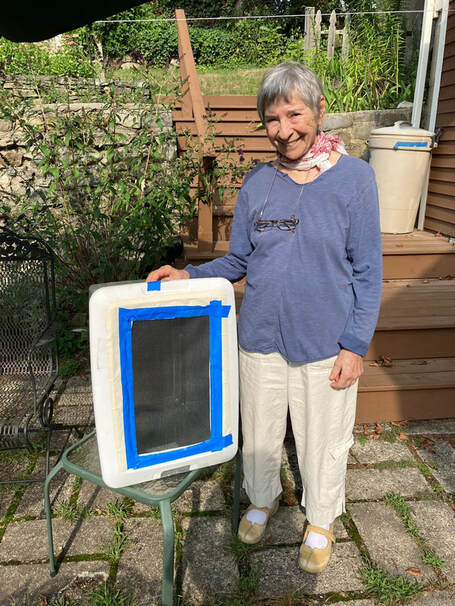
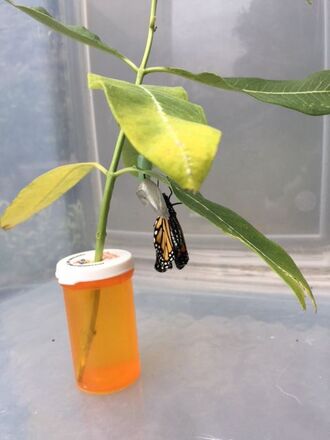
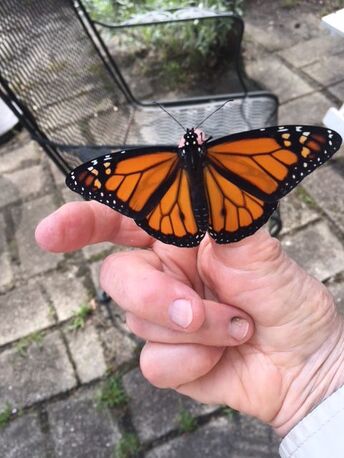
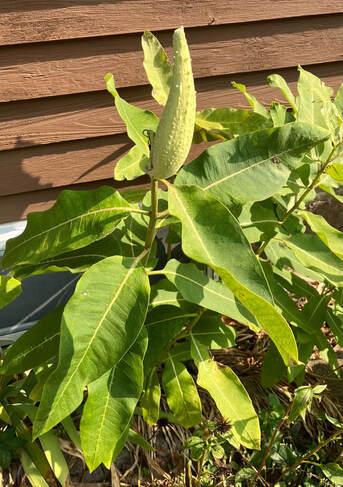
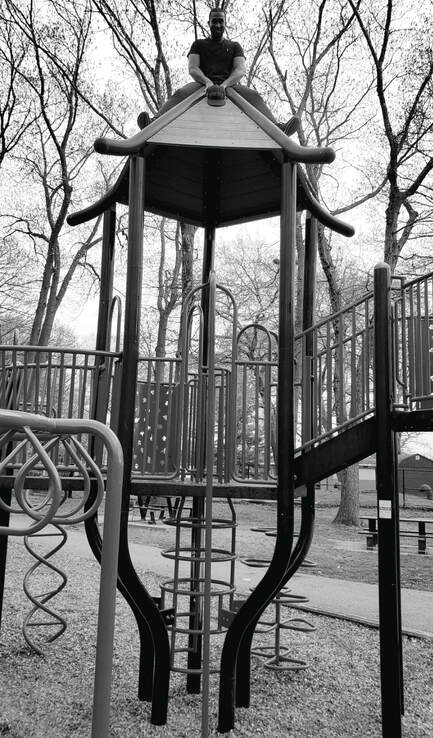
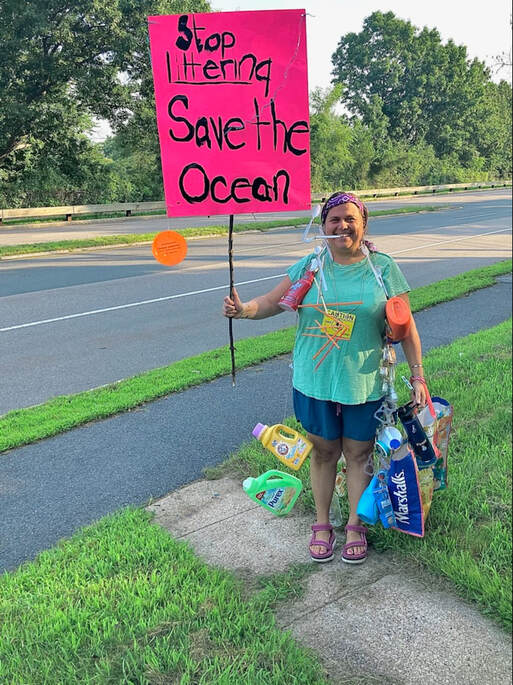
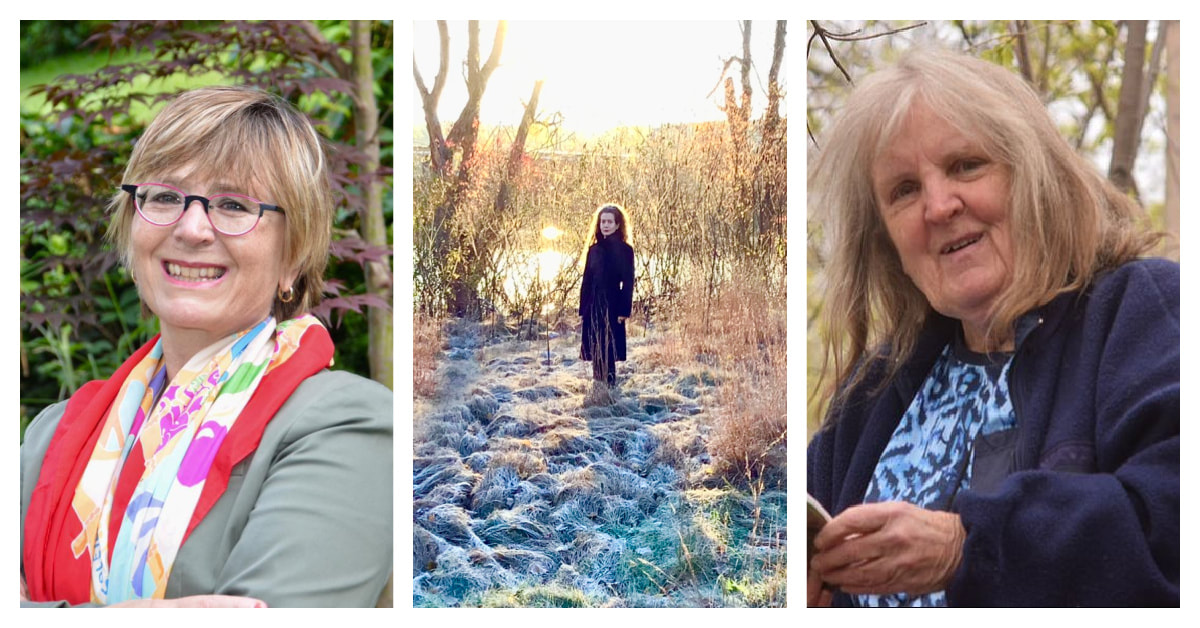
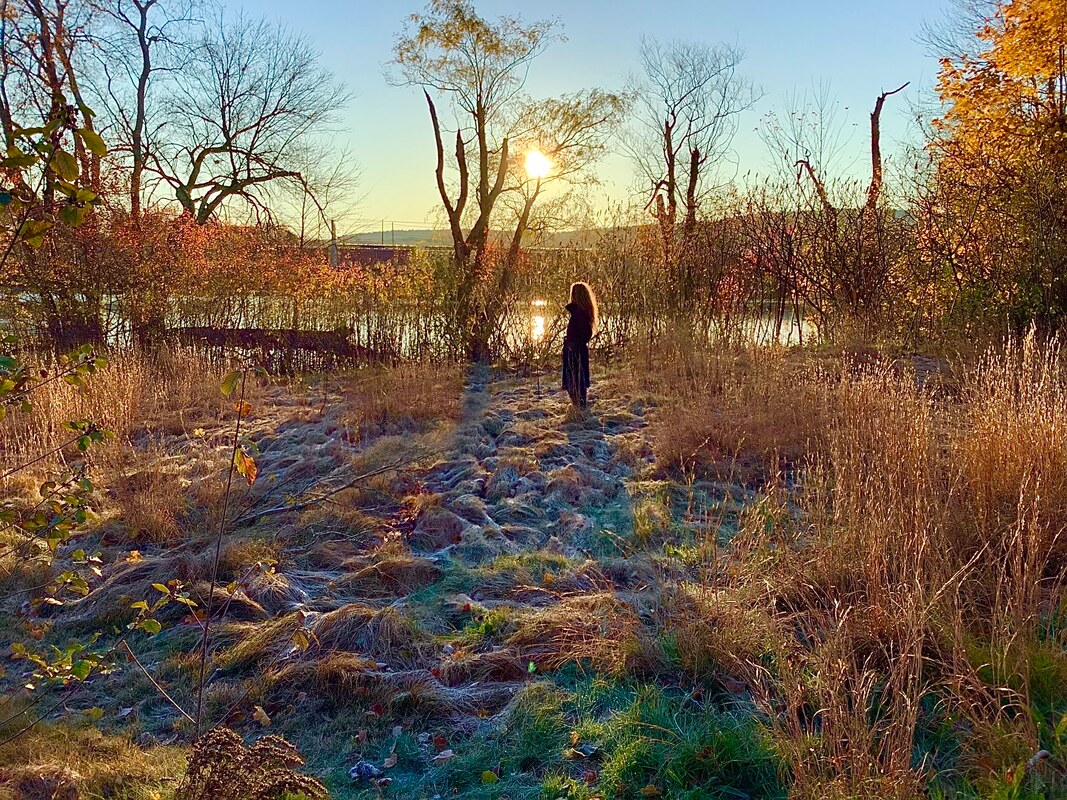

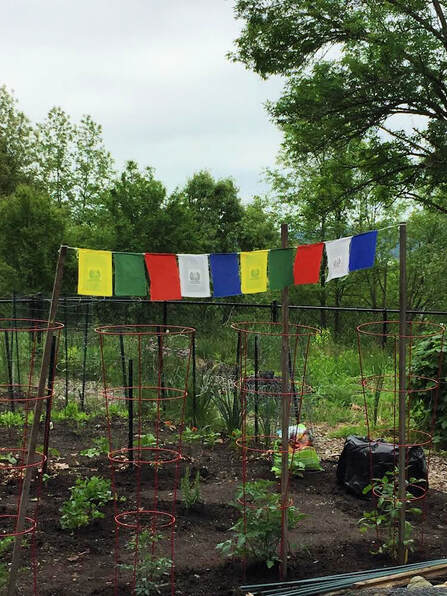
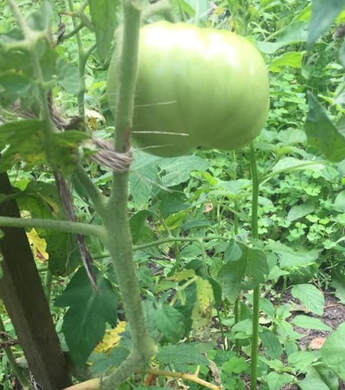
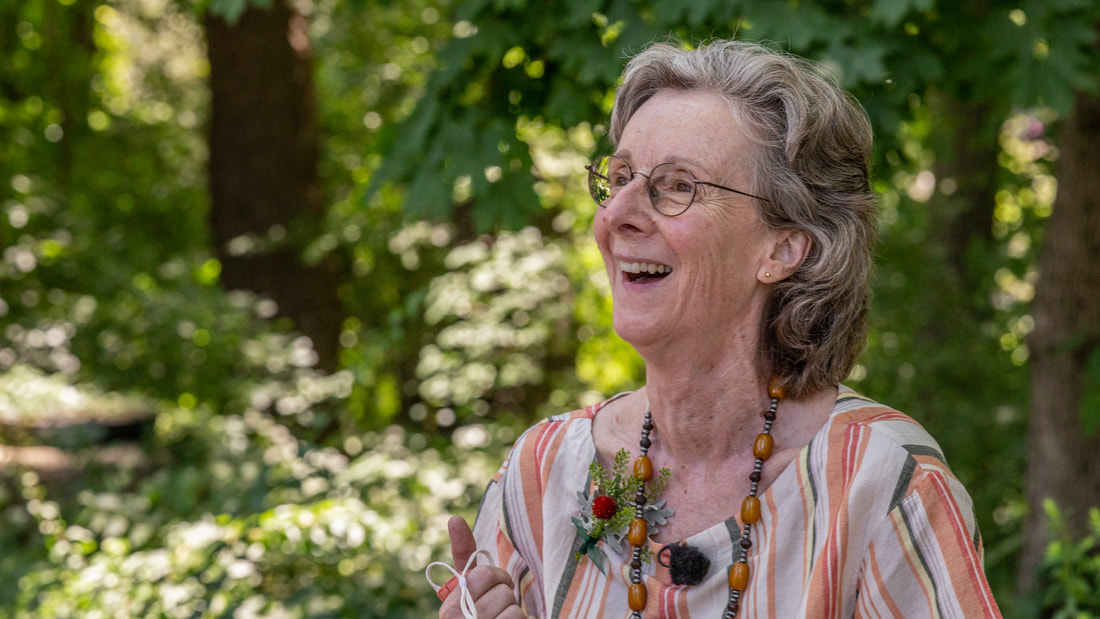
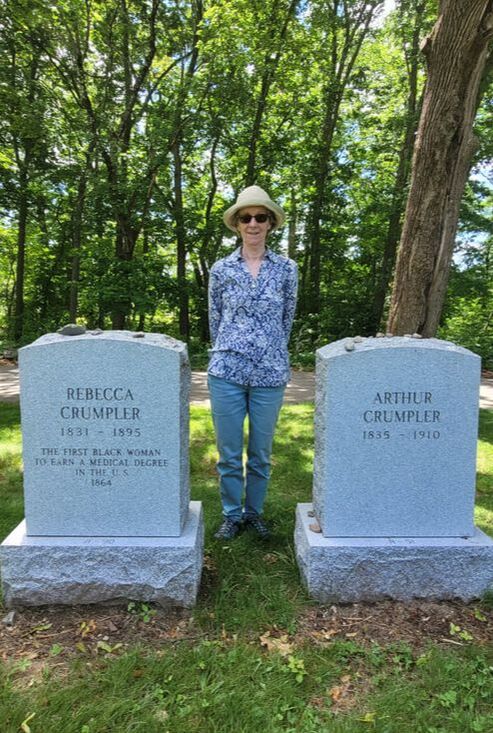
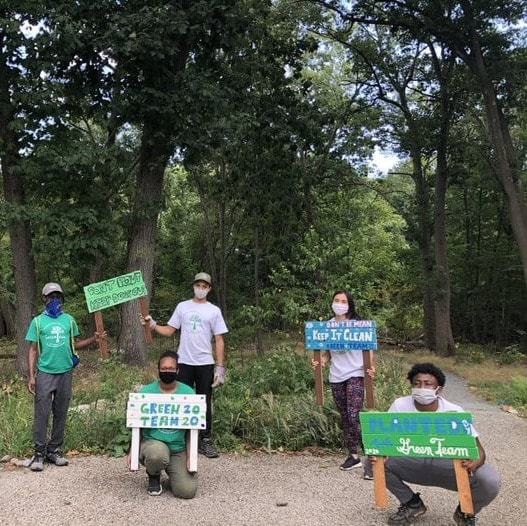
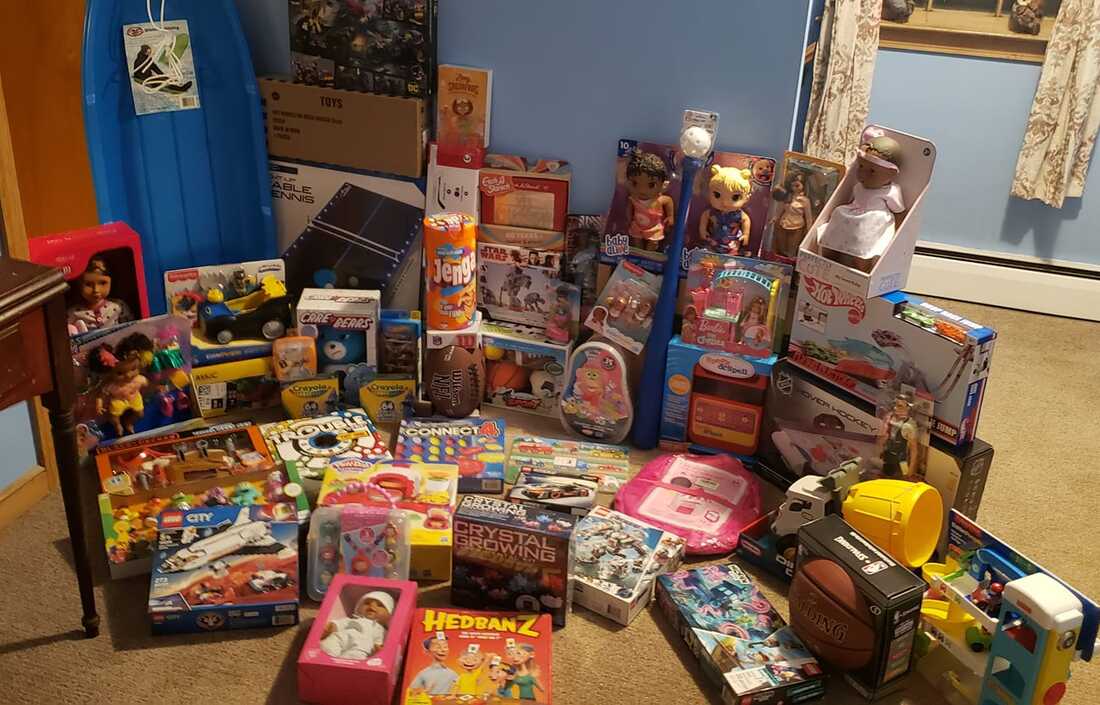
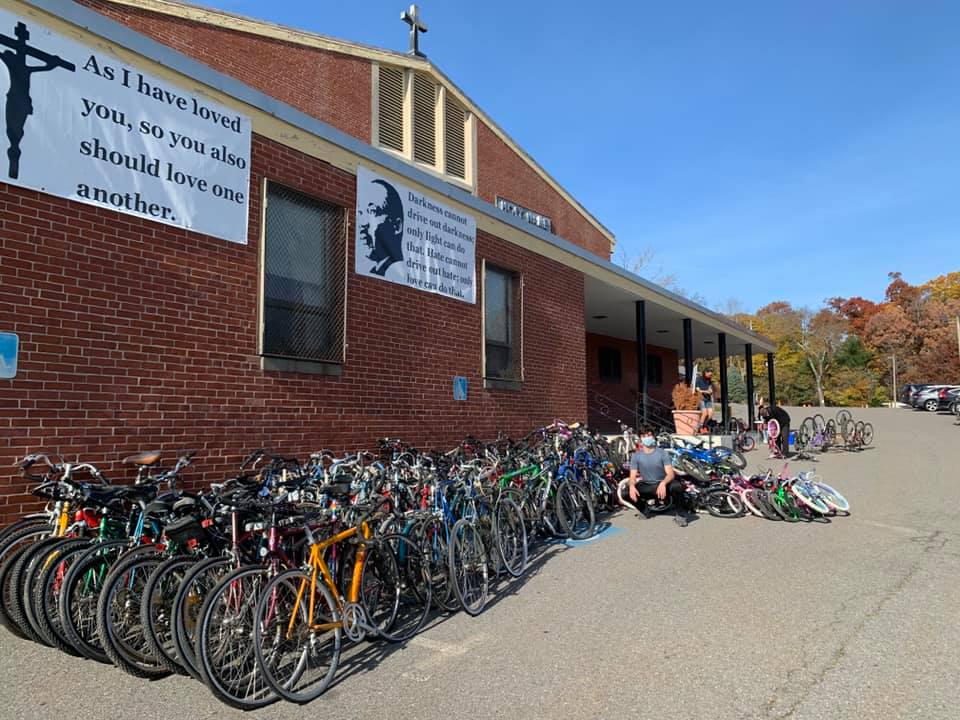
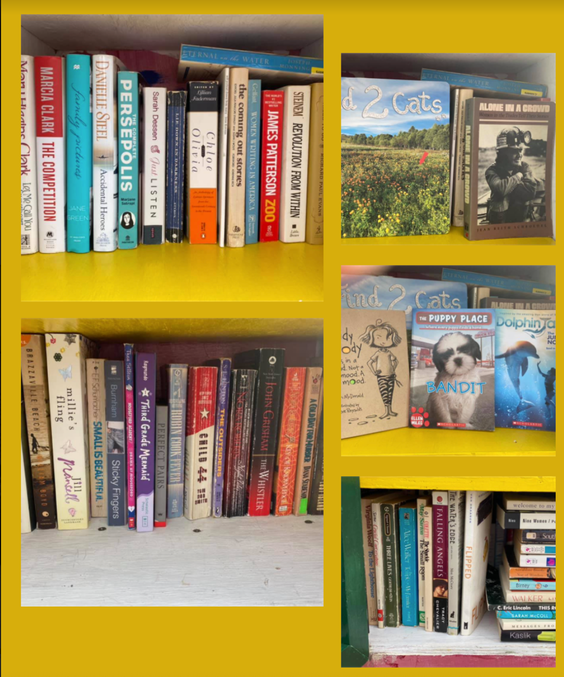
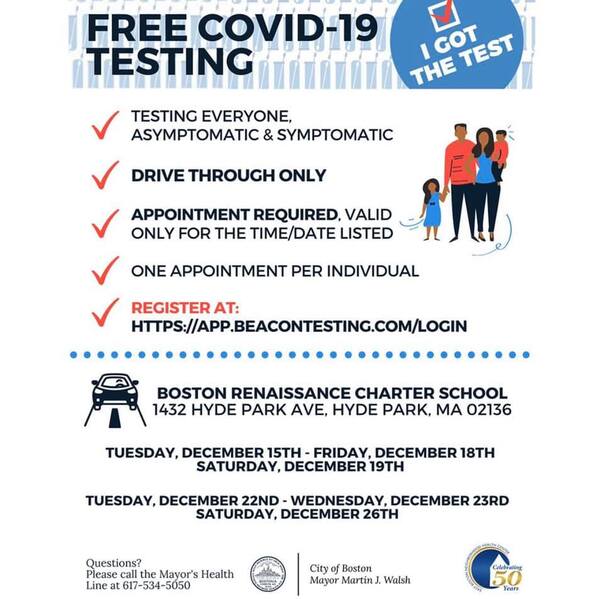
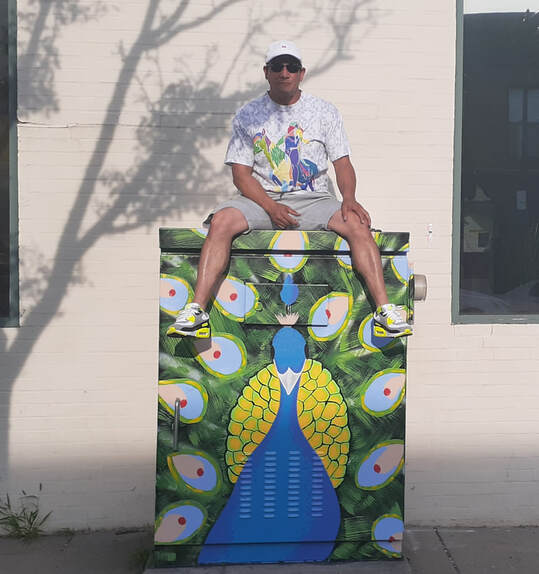
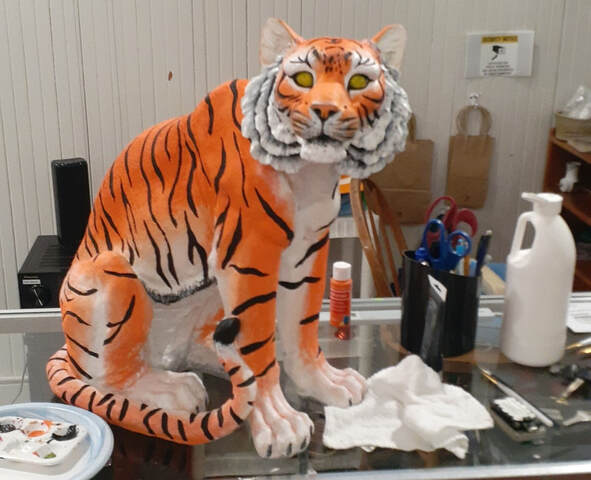
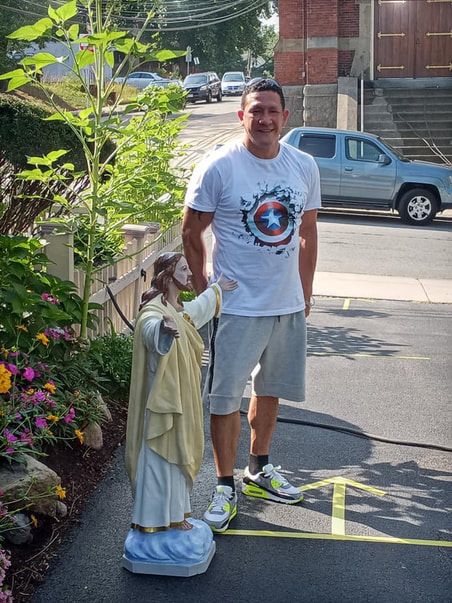
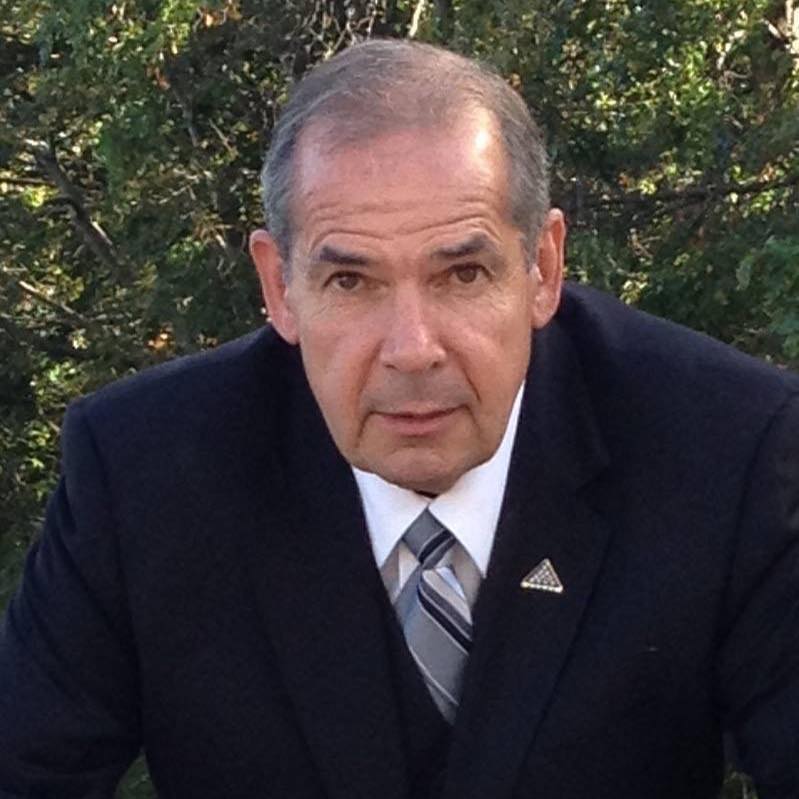
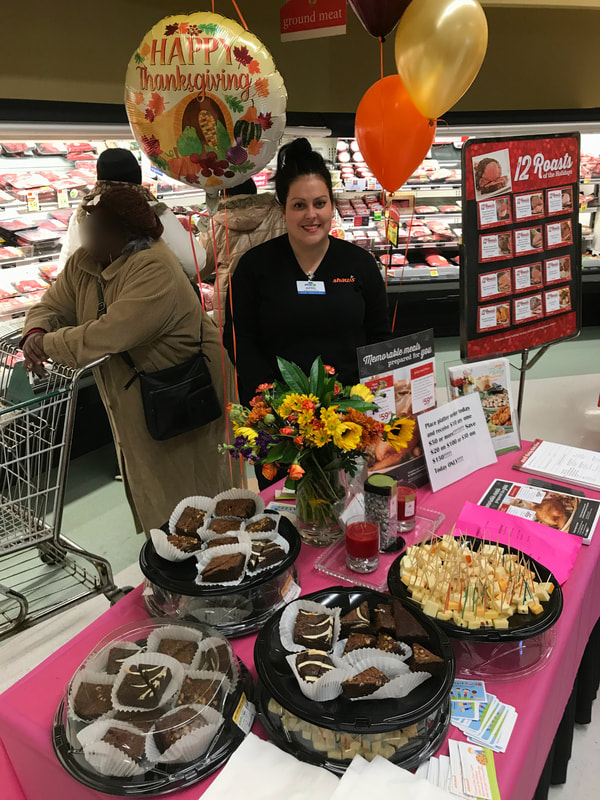
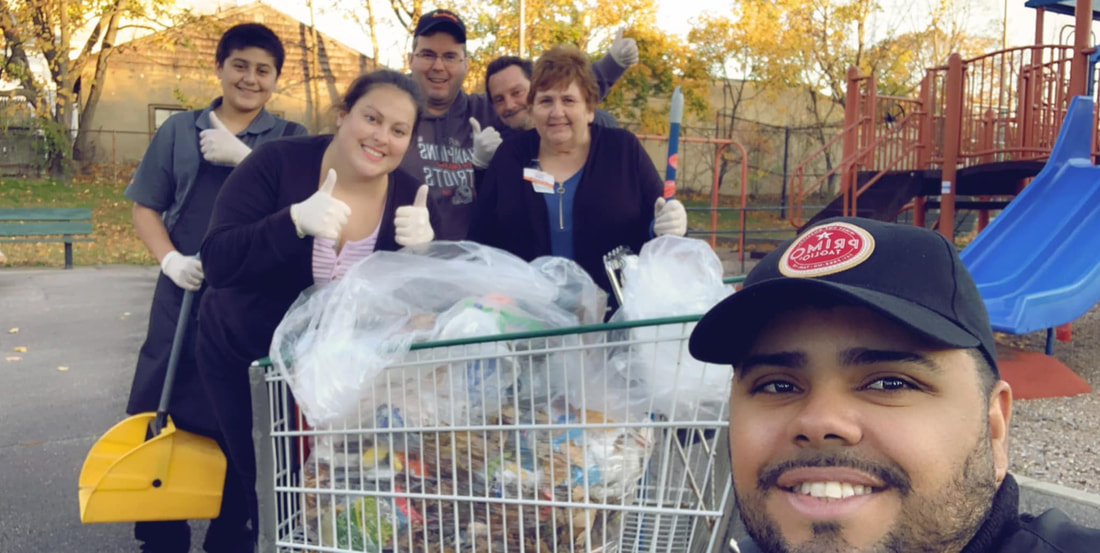
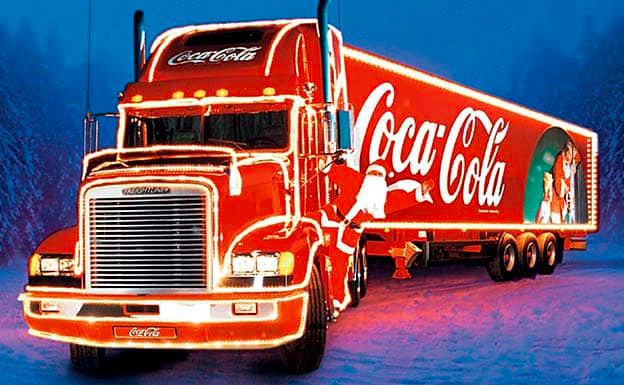
 RSS Feed
RSS Feed